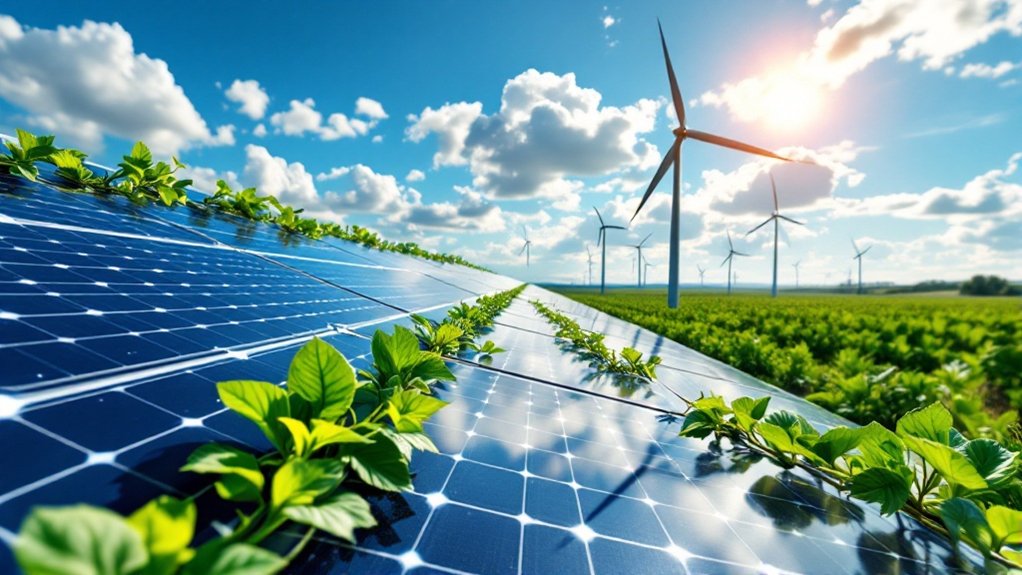
Cutting-Edge Solar Technologies You Should Know
The landscape of renewable energy is evolving with innovative solar technologies. Advanced photovoltaic cells, bifacial panels, and building-integrated photovoltaics are just a few examples of this transformation. Each technology offers unique advantages, enhancing efficiency and aesthetics. As these solutions gain traction, understanding their implications becomes essential. What might this mean for energy consumption and sustainability in the future? The answers lie in exploring these cutting-edge developments further.
Advanced Photovoltaic Cells
As the demand for sustainable energy sources grows, advanced photovoltaic cells have emerged as a pivotal technology in solar energy conversion. These cells utilize innovative materials and designs to enhance efficiency and energy output. Unlike traditional silicon-based cells, advanced options, such as perovskite and multi-junction cells, offer improved light absorption and conversion rates, allowing for greater electricity generation from the same surface area. Research continues to focus on increasing durability and lowering production costs, making these cells more accessible for widespread use. Additionally, their lightweight and flexible designs enable integration into various applications, from residential rooftops to portable devices. The development of advanced photovoltaic cells represents a significant step towards achieving a cleaner, more sustainable energy future. Furthermore, as renewable energy capacity continues to increase, the role of advanced photovoltaic cells becomes ever more critical in driving this transformation.
Bifacial Solar Panels
Bifacial solar panels represent a notable innovation in solar energy technology, allowing for enhanced energy capture through dual-sided functionality. Unlike traditional solar panels, which only absorb sunlight from one side, bifacial panels utilize both sides to harness reflected sunlight from the ground and surrounding surfaces. This design can lead to increased energy production, especially when installed in ideal environments, such as those with reflective surfaces like snow or sand. Additionally, bifacial panels are often more durable, as they can withstand environmental stressors better than conventional counterparts. Their efficiency makes them an attractive option for both residential and commercial applications, contributing to a more sustainable energy solution. As technology advances, the adoption of bifacial solar panels is expected to grow considerably. Incorporating renewable energy into our daily lives can significantly reduce our carbon footprint and support a sustainable future.
Building-Integrated Photovoltaics (BIPV)
Building-Integrated Photovoltaics (BIPV) represent a significant advancement in solar technology, merging functionality with architectural design. This integration offers design versatility and enhanced aesthetics while contributing to energy efficiency in various structures. However, considerations regarding installation processes and associated costs are essential for wide-scale adoption. Additionally, the rise of hybrid work models encourages the integration of sustainable technologies like BIPV in new building designs to support remote work environments.
Design Versatility and Aesthetics
Innovative solar technologies, particularly Building-Integrated Photovoltaics (BIPV), offer remarkable design versatility and aesthetic appeal for modern architecture. By seamlessly integrating photovoltaic materials into building elements such as facades, roofs, and windows, BIPV allows architects to maintain aesthetic integrity while harnessing solar energy. This technology eliminates the need for traditional solar panels, enabling a more cohesive design that complements various architectural styles. Available in diverse colors, shapes, and textures, BIPV can mimic conventional building materials, making it suitable for both residential and commercial applications. As a result, BIPV enhances the visual appeal of structures while promoting sustainable practices, positioning itself as a key player in the evolution of environmentally friendly architecture.
Energy Efficiency Benefits
While traditional solar installations focus solely on energy generation, Building-Integrated Photovoltaics (BIPV) provide significant energy efficiency benefits by combining functionality with architectural design. BIPV systems serve dual purposes, acting as both building materials and energy generators, which can reduce heating and cooling costs. By integrating solar panels into structures, they enhance insulation and minimize the need for additional building materials, leading to a smaller carbon footprint. Moreover, BIPV can optimize energy consumption by harnessing solar power directly at the source, decreasing reliance on grid energy. This innovative approach not only promotes sustainability but also improves the overall energy performance of buildings, making BIPV a compelling choice for environmentally conscious architects and homeowners.
Installation and Cost Factors
As the demand for sustainable energy solutions grows, the installation and cost factors of Building-Integrated Photovoltaics (BIPV) become increasingly important for architects and builders. BIPV systems, which seamlessly integrate solar cells into building materials, often entail higher initial costs compared to traditional solar panels. However, these costs can be offset by reduced energy bills and potential tax incentives. Installation complexity varies, depending on the building design and the specific BIPV product chosen. Proper planning and skilled labor are essential to guarantee peak performance and aesthetic integration. Over time, the longevity and durability of BIPV systems can lead to significant savings. Ultimately, a thorough cost-benefit analysis is vital for stakeholders considering BIPV as a viable energy solution.
Solar Skin Technology
Solar Skin Technology offers a unique approach to solar energy by prioritizing aesthetics alongside functionality. With customizable design options, homeowners can integrate solar panels that complement their property’s appearance while maximizing energy efficiency. This innovation represents a significant shift towards more visually appealing and efficient solar solutions. Additionally, mindfulness practices can enhance the experience of adopting new technologies by promoting a greater awareness of the choices we make regarding energy consumption.
Aesthetic Solar Panels
Aesthetic solar panels, particularly those utilizing Solar Skin technology, have emerged as a transformative solution for homeowners seeking renewable energy without compromising architectural integrity. These innovative panels feature customizable designs that mimic traditional roofing materials or seamlessly blend with the home’s exterior. This technology allows solar energy systems to be visually appealing while maintaining their efficiency. Homeowners can achieve a modern aesthetic without sacrificing power generation, addressing concerns about the visual impact of conventional solar panels. By integrating advanced printing methods, Solar Skin technology enables the creation of unique patterns and colors, making solar installations a more attractive option. As more individuals prioritize aesthetics alongside functionality, aesthetic solar panels signify a significant advancement in solar energy adoption.
Customizable Designs Options
Innovative advancements in solar technology have led to a range of customizable design options that cater to individual homeowner preferences. One notable development is Solar Skin technology, which allows homeowners to personalize the appearance of their solar panels. This technology enables users to choose from various designs, including images, colors, and patterns, transforming traditional solar panels into aesthetically pleasing elements of their homes. By integrating artistic elements, homeowners can maintain their property’s visual appeal while harnessing renewable energy. Furthermore, this customization fosters a sense of ownership and pride in adopting solar solutions. As awareness of sustainable energy grows, such personalized options are becoming increasingly popular, bridging the gap between functionality and design in the solar energy sector.
Enhanced Energy Efficiency
As homeowners increasingly seek ways to optimize their energy consumption, enhanced energy efficiency through technologies like Solar Skin is gaining attention. Solar Skin technology integrates advanced solar panels with customizable aesthetics, allowing homeowners to blend renewable energy solutions seamlessly into their homes. This innovation not only improves visual appeal but also maximizes energy output by utilizing sophisticated design features that enhance sunlight absorption. By using high-efficiency photovoltaic cells, Solar Skin captures more sunlight, converting it into usable energy more effectively than traditional panels. Additionally, the technology incorporates smart monitoring systems that track energy production and consumption, enabling users to make informed decisions about their energy usage. Ultimately, Solar Skin represents a significant advancement in achieving both aesthetic and energy-efficient home solutions.
Solar Tracking Systems
How can solar energy systems maximize efficiency? Solar tracking systems offer a compelling solution by adjusting the position of solar panels to follow the sun’s trajectory throughout the day. This technology enables panels to capture more sunlight, increasing energy generation by up to 25-50% compared to fixed installations. There are two primary types of solar trackers: single-axis and dual-axis. Single-axis trackers rotate along one axis, while dual-axis trackers adjust along both horizontal and vertical axes, allowing for peak sun exposure year-round. While these systems can incur higher initial costs and require maintenance, their enhanced efficiency and output make them a worthwhile investment for large-scale solar farms and commercial applications. Additionally, AI technology is increasingly being utilized to optimize the performance of solar tracking systems. Overall, solar tracking systems play a crucial role in maximizing solar energy potential.
Concentrated Solar Power (CSP)
While solar tracking systems enhance efficiency through dynamic positioning, Concentrated Solar Power (CSP) utilizes a different approach to harness solar energy. CSP systems employ mirrors or lenses to concentrate sunlight onto a small area, generating heat that is then used to produce steam, driving turbines to generate electricity. This technology typically consists of large-scale installations, such as solar power towers or parabolic troughs, making it suitable for utility-scale energy production. CSP offers the advantage of high efficiency and the ability to generate power even during cloudy conditions. However, its reliance on direct sunlight limits its effectiveness in regions with less consistent solar availability. Overall, CSP represents a significant advancement in the quest for sustainable energy solutions.
Energy Storage Solutions
The effective harnessing of solar energy through technologies like Concentrated Solar Power (CSP) highlights the importance of energy storage solutions in maximizing renewable energy potential. Energy storage systems are essential for addressing the intermittent nature of solar power, allowing excess energy generated during peak sunlight hours to be stored for later use. Advanced battery technologies, such as lithium-ion and flow batteries, provide efficient and scalable options for residential and commercial applications. In addition, thermal energy storage systems, which store heat for electricity generation, enhance reliability. As the demand for sustainable energy sources grows, innovative storage solutions will play a pivotal role in integrating solar energy into the grid, ensuring a stable and consistent power supply while reducing reliance on fossil fuels.
Floating Solar Farms
Floating solar farms represent a groundbreaking approach to harnessing solar energy by utilizing bodies of water for the installation of photovoltaic panels. This innovative technology addresses land scarcity issues while maximizing efficiency through cooling effects from water. The installation of solar panels on reservoirs, lakes, or other water bodies reduces evaporation, contributing to water conservation. Additionally, floating solar farms can be integrated with existing infrastructure, such as hydropower plants, enhancing energy generation capabilities. Countries like China, Japan, and India are leading in the deployment of these systems, demonstrating their potential for scalability and sustainability. As interest grows, floating solar technology may play a crucial role in meeting global energy demands while minimizing environmental impact.
Solar-Powered Desalination
As the demand for freshwater intensifies amid climate change and population growth, solar-powered desalination emerges as a promising solution to address water scarcity. This innovative technology utilizes solar energy to convert seawater into potable water, greatly reducing reliance on fossil fuels. Various methods, including solar stills and reverse osmosis, harness sunlight to drive the desalination process efficiently. Countries facing severe water shortages are increasingly investing in these systems, recognizing their potential to provide sustainable and cost-effective freshwater sources. Additionally, advancements in materials and energy efficiency are enhancing the viability of solar desalination. By integrating this technology into existing water supply infrastructure, communities can bolster their resilience against climate-related water challenges, ensuring access to clean water for future generations.
Frequently Asked Questions
What Are the Environmental Impacts of Manufacturing Solar Technologies?
The environmental impacts of manufacturing solar technologies include resource extraction, energy consumption, and waste generation. While solar energy reduces greenhouse gas emissions during operation, the production process can contribute to pollution and ecological disruption if not managed responsibly.
How Long Do Solar Panels Typically Last Before Needing Replacement?
Solar panels typically last between 25 to 30 years before requiring replacement. Their longevity depends on factors like quality, installation, and local environmental conditions, which can influence performance and durability over time.
Can Solar Technologies Operate Effectively in Cloudy Climates?
Solar technologies can operate effectively in cloudy climates, although their efficiency may decrease. Advanced solar panels are designed to capture ambient light, ensuring energy generation continues even under less-than-ideal weather conditions, maximizing output year-round.
What Financial Incentives Are Available for Solar Energy Installation?
Various financial incentives for solar energy installation exist, including federal tax credits, state rebates, and net metering programs. These incentives aim to reduce initial costs, making solar energy more accessible and appealing to homeowners and businesses.
How Can I Determine the Best Solar Technology for My Needs?
To determine the best solar technology, one should assess energy needs, budget constraints, available space, local climate conditions, and potential incentives. Consulting with solar professionals can provide tailored recommendations based on individual circumstances and goals.
Conclusion
To summarize, the landscape of solar technology is rapidly evolving, driven by innovative advancements that enhance efficiency, aesthetics, and functionality. From bifacial panels and building-integrated photovoltaics to solar tracking systems and energy storage solutions, these cutting-edge technologies are making solar energy more accessible and appealing to a broader audience. As these innovations continue to develop, they hold the potential to greatly impact the renewable energy sector and contribute to a more sustainable future.



